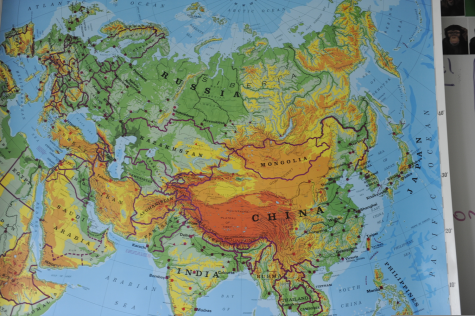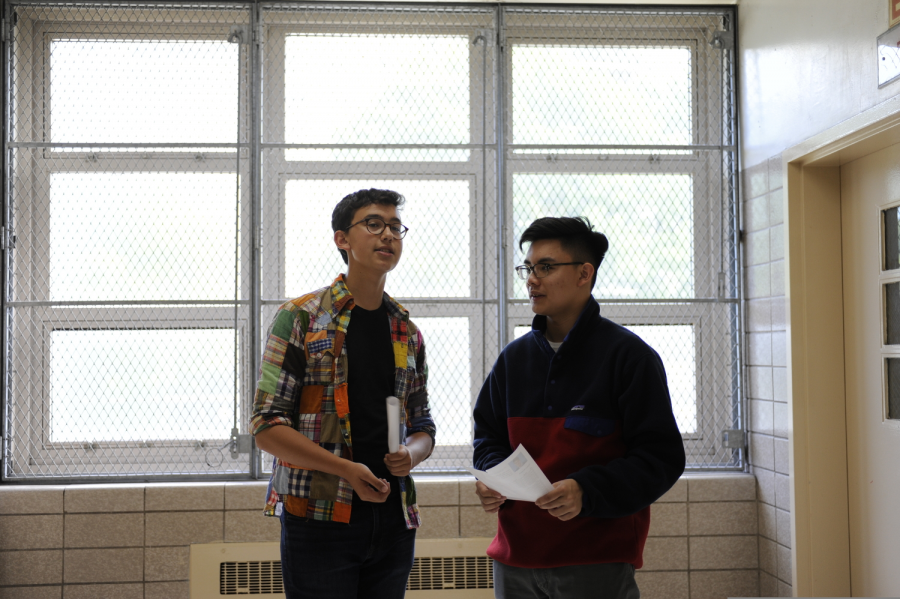The Face of Famine in North Korea: Blindness, Cannibalism, and a Desire to Escape
Jonathan Bar-On ’20 and Garreth Hui ’20 discussing the current famine in North Korea and potential resolutions.
“When you read this, our five family members will not exist in this world because we have not eaten in the past few weeks. We are lying on the floor together and our bodies are so weak, we are waiting to die.” These were the very words Hyeonseo Lee read as a child living in North Korea when her mother had received a letter from her co-worker’s sister. She was fifteen years old.
And this story is not uncommon. While North Korea’s supreme leader, Kim Jong Un, dines on imported cheeses and sips expensive liquors, the motto, “Let’s only eat two meals a day!” rings in the ears of the 12.75 millions of North Koreans who make meals out of rice roots and fermented cabbage, half of their total population.
And according to the United Nations, of those, over 43% are malnourished. This is the result of “The Arduous March,” a famine that has outlived nearly two million people—reportedly “one of the great famines of the 20th century.”
But for many, enduring malnutrition never raised any red flags because it was a common sight to see—the brittle hair, the pale faces, the pronounced rib cages. What constituted “healthy” and “normal” was simply the ability to walk, so many turned a blind eye to the hungry—quite literally. It was the all-too-frequent combination of starvation and the lack of medical facilities that resulted in the generation of cataracts and myopia in even the youngest of children, which if left untreated, can result in chronic blindness.
Mina Yoon, a North Korean defector, recounts her younger sister’s deteriorating eyesight, “My little sister went to kindergarten then, and she occasionally collapsed just while walking on the street. Then one day even her eyesight started deteriorating. She could not see anything at night. She could not even pick up her rice bowl.” Yoon’s own health was never a concern, despite her grumbling stomach; family always came first.
But not everyone agrees. In the initial stages of the famine’s outbreak, children were forbidden from going out alone, street food vendors were no longer trusted, and sleeping out in the open was no longer an option. This fear was rooted in cannibalism. Following claims originating in Chongjin, North Korea’s third-largest city, a man had murdered his eldest daughter for food. And because the son saw, he too was killed. “We have meat,” he told his wife. Seemingly, the people had a choice: eat or be eaten.
‘The New York Post’ reports that experts believe as many as three million people have died of hunger in the 1990s, when the country was heavily entangled in the famine’s extreme clutches. Bronx Science students, Jonathan Bar-On ’20 and Garreth Hui ’20 debated the current situation in the country.
“The biggest problem with famine is that price inflation exacerbates all of it, and the reason why the Kim regime is so powerful is because they’re able to manipulate the price at competitive markets. For example, for members of the Kim regime, toilet paper only costs 200 won, but for everyone else it costs 1400 won, and we see the same thing with everyday food… [the people] can’t afford it. They’re paying for either housing, food, or health care and they can only really choose one. So in the long run what’s going to happen is food isn’t going to be produced, people are going to be sick, and they’re not going to have anywhere to live. Ultimately what happens [is] death… and that’s not okay,” said Bar-On.
“Clearly the people have invested themselves in a government that’s not working…[they] haven’t done anything or at least we haven’t heard anything that they’ve done to make sure that their situation is better,” said Hui.
“But [you’re] assuming there’s a choice. There is no choice. There was choice in the 1950s but most of those people are dead now,” retorted Bar-On.
“But we still believe in them to the point where they don’t want an uprise. You can have a revolution. People need to come together… As of right now, they’ve done nothing,” said Hui.
It remains unclear if revolting against the government is the solution, but one thing is for sure: the people are fleeing. As of now, there are nearly 30,000 North Korean refugees longing to make their home in South Korea and their trek is not only long, but life-threatening. But it was a matter of freedom and if it has a price. Through enough bribery and perseverance, these North Koreans are smuggled through China to countries like Russia, Burma, Laos, Thailand, risking to be caught and sent back at any point. And if captured, they are now prisoners, thrown in jail cells that are “as bad as” Nazi concentration camps, says Thomas Burgeanthal, a former judge of the International Court of Justice and an Auschwitz survivor.
But if successful, North Korean defectors are seen as outcasts in society shunned by not only its residents but the government as well. In July of 2019, Han Sun-Ok and her son, who defected to South Korea to flee the famine, were found so decomposed in their $74/month apartment that authorities were unable to determine the cause of death just two months after.

The journey from North Korea to the South Korean embassy, having to first go through China to countries such as Russia, Laos, Burma, and Thailand.
Now, the people are hungrier than ever—for justice. South Korea’s president Moon Jae-In and the government are currently under fire, receiving immense backlash from both North and South Koreans for taking little to no action in regard to public welfare. However, it was announced that the government would better regulate this situation, checking in with every North Korean defector residing in South Korea and offering help if needed. It simply remains a question if they can be held to their word. But for now, we wait.
Jean Namgung is a Copy Chief for ‘The Observatory’ and a Staff Reporter for ‘The Science Survey.’ Although this is her first year in journalism...











